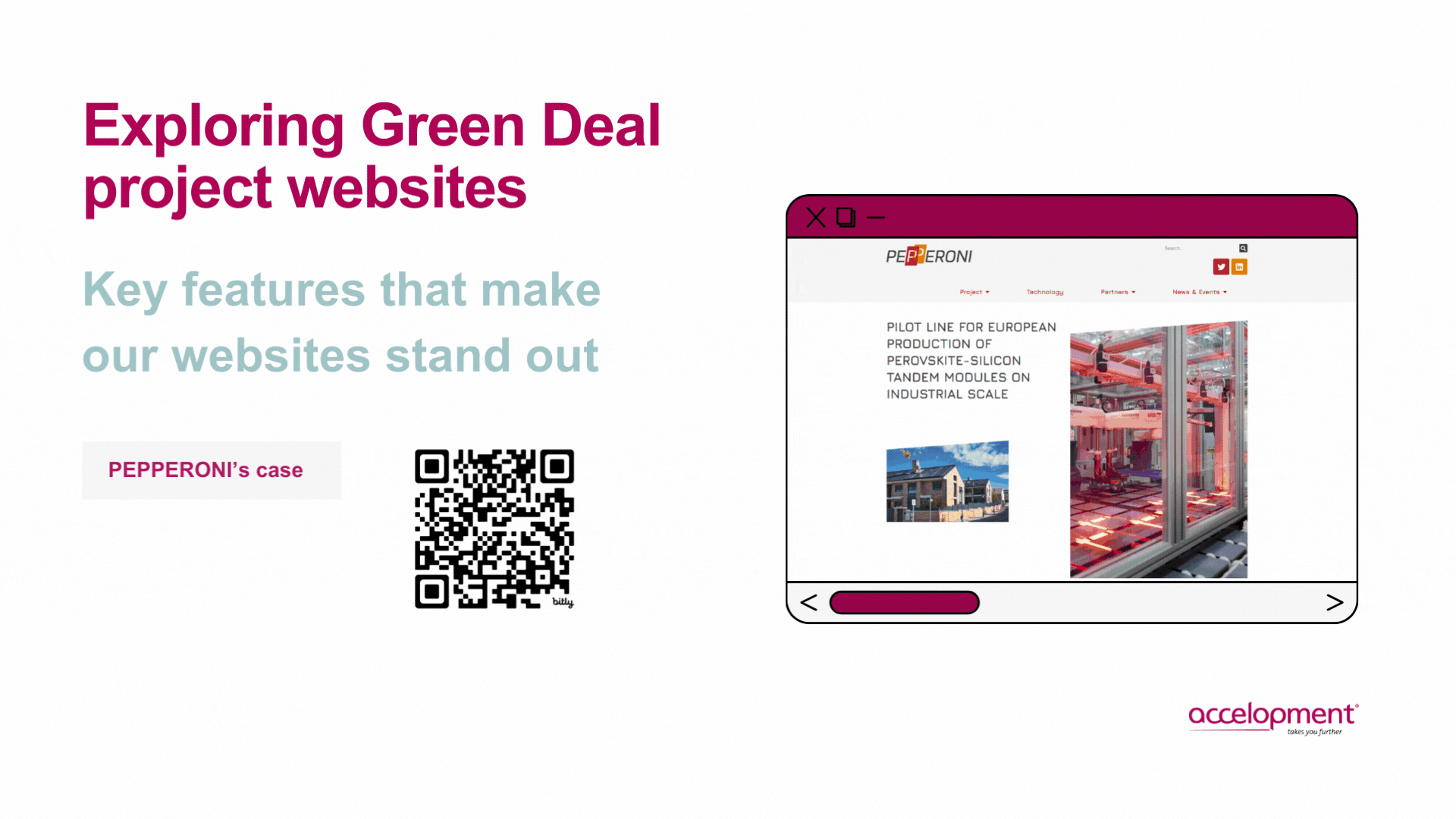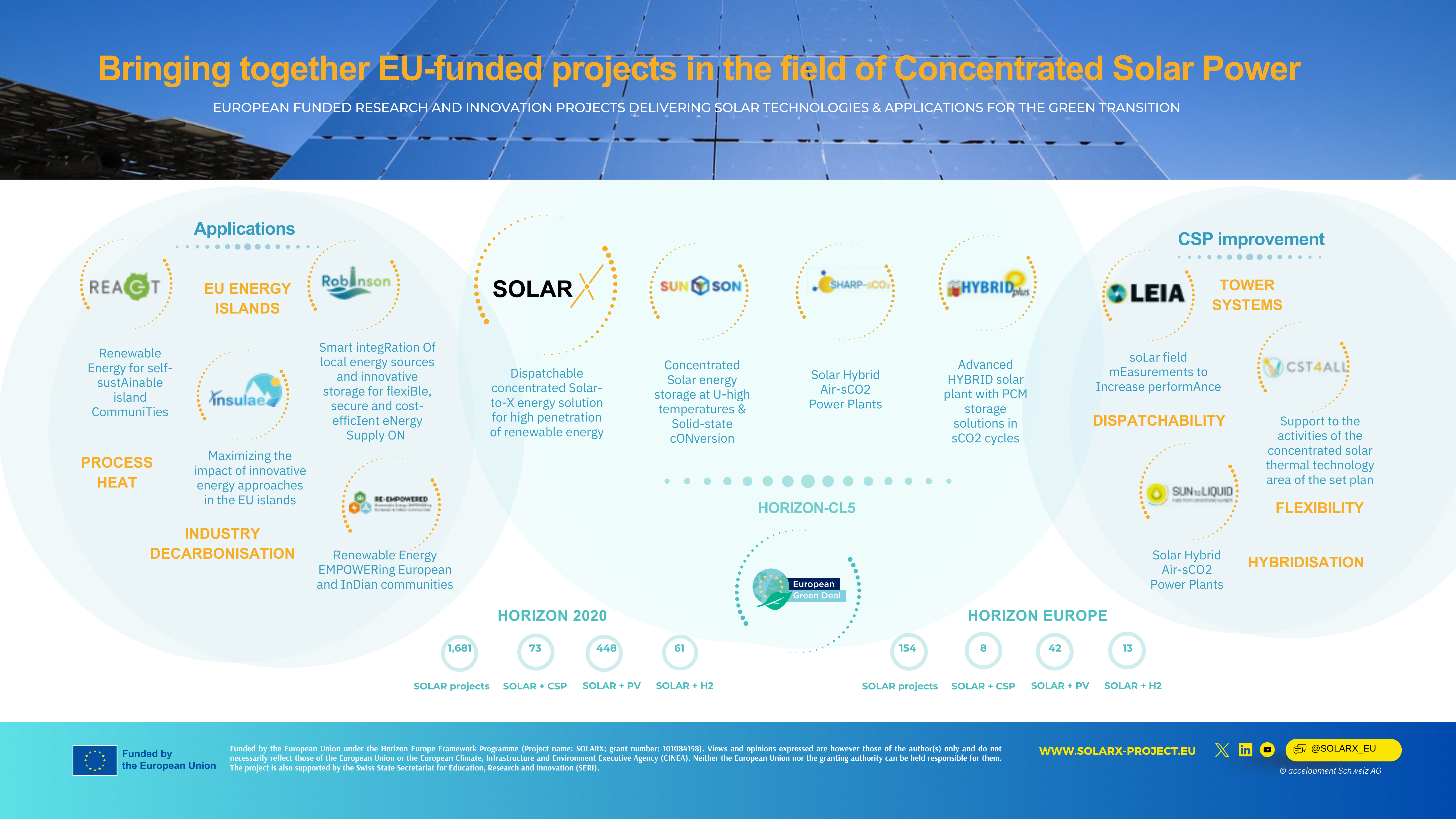Boost your impact – Effective communication and dissemination of Horizon Europe Green Deal projects
23rd July 2024 at 1:47 pm
Dozens of Green Deal funding opportunities for research and innovation projects are still open in the current Horizon Europe programme until 2025. Among the key calls are initiatives focusing on climate adaptation, renewable energy advancements, energy-efficient technologies, biodiversity conservation, circular economy solutions, sustainable agriculture, and clean transportation systems. These cover a broad range of technologies – from digital tools for concentrated solar power (CSP), Innovative Photovoltaics (PV) systems and electric mobility applications to digital twins for facilitating and optimising circular energy renovation.
You will find more details on the open call topics in our Green Deal blog series, including Hundreds of Green Deal funding opportunities for research and innovation in Europe, Research and innovation for climate-neutral energy supply and mobility across Europe, EU Missions supporting the Green Deal – funding opportunities 2024/2025 and Research and innovation towards an environmentally sustainable, circular and bio-based economy.
Green Deal projects distinguish themselves from other projects by their strong focus on sustainability and climate neutrality, aiming to transform the European Union into the first climate-neutral continent by 2050. These proposals prioritise cross-sectoral collaboration and innovative solutions to address environmental challenges, ensuring an integrated approach to economic, social, and environmental sustainability.
Impact section: Communication of projects and dissemination of results
If you are planning to prepare a proposal for one of these call topics or have already started working on the Part B proposal document, then this blog might come in handy and timely. We would like to share our experience from drafting the Impact section of Part B and notably its sub-chapter on the “Plan for the dissemination and exploitation including communication activities”. Here, the planned communication and dissemination activities need to be described by providing details on their target groups, the ways of implementation and key performance indicators (KPIs) for their impact assessment. There are some must-haves and many nice-to-have measures one can think of. We will start by sharing three of the top five with you, which appear to be well-perceived by proposal evaluators.
To start with, we recommend that you propose a Dissemination and Exploitation Plan, including Communication (DEC Plan), as the first deliverable of your outreach plan. The purpose of the DEC Plan is to define the main goals of your impact, develop strategies, and identify measures that can help you achieve these. Some highlights of our DISCO activities:

1. Target-group directed project websites – your online hub
The website is indeed a legal obligation of any HORIZON-funded consortium, as stated in Art. 18 of the EC Grant Agreement. However, a website is not just a measure to satisfy the reviewers and the EC; it can be a “business card” of your project and partners and a powerful tool to showcase your project results.
Structuring it based on who you want to reach is the key step for creating this main communication channel to raise awareness of the project’s progress. A stakeholder-oriented website should not only inform but also actively engage and connect people. By integrating interactive elements, offering networking opportunities, and providing regular updates, the website becomes a hub for communication and collaboration.
Creating a target-group directed project website is crucial for ensuring that the specific needs and interests of various stakeholders, such as policymakers, researchers, industry partners, and the general public, are effectively addressed. This tailored approach enhances the project’s visibility, fosters community support, and drives collective action towards the Green Deal’s ambitious objectives.
To maximise its effectiveness, it’s essential that the website communicates clearly with defined target audiences and is proportionate to the scale of your project. For Green Deal proposals, the website serves a critical role by emphasising the project’s alignment with the EU’s sustainability goals, showcasing innovations aimed at climate neutrality, and engaging a broader audience in environmental impact discussions. Here is an excellent example of a website that the communication team at accelopment set up for the project PEPPERONI:

2. Project landscape – get a general picture of complementary technologies
As your project is “one of many”, drawing a project landscape can help to demonstrate complementary initiatives and/or to benchmark your research idea and results. It is also a way to identify potential competitors and similar technologies to those to be developed in your project.
An overview of ongoing EU-funded R&I initiatives will not only allow you to connect and foster synergies but also serve as a guide for the future exploitation of results. For example, in the SOLARX project the communication team of accelopment created a landscape of ongoing projects in the field of CSP technologies while building up a potential network to facilitate joint initiatives and future collaborations.

This activity will most likely boost your Impact score as will enhance European Green Deal innovation capacity and extend the reach of generated results through shared complementary approaches and technologies.
3. Cluster event – build on the involvement of other EU projects
Why not leverage the project landscape to identify other consortia for joint activities? Organising a multilateral gathering with other Horizon Europe projects to align with ongoing initiatives can enhance your impact. For instance, hosting a joint workshop that includes the scientific community, industry stakeholders, and other relevant groups remains a popular and effective activity. These clustering activities facilitate knowledge exchange among researchers, pave the way for future collaborations, and foster deeper connections within the project’s network.
In the next blog post we will unveil more details about this good practice, explaining why cluster activities remain special also in the Green Deal projects compared to other activities. We at accelopment have organized quite a few over the years, you can find more details on our blog Clustering in EU projects: how cluster events help maximise the impact of your research.
accelopment as a Green Deal project partner for communication and dissemination
We at accelopment have been a reliable cooperation partner for numerous research and innovation projects with a focus on the European Green Deal, especially across the energy-mobility interface. ROADVIEW is developing novel perception and navigation systems for autonomous vehicles for challenging weather conditions, SOLARX is advancing concentrated solar energy systems to integrate multiple energy vectors and PEPPERONI is implementing the first pilot line for the large-scale production of perovskite-silicon PV modules in Europe. Our communications team values the importance of knowledge sharing and building on previous experiences, and as your sparring partner, we can assist you by offering guidance and tips to elevate your Impact score and to implement the communication, dissemination, and exploitation of your research or innovation.

Miriam Frances
Project Manager Communications

Joanna Pleasniak
Project Manager Communications
